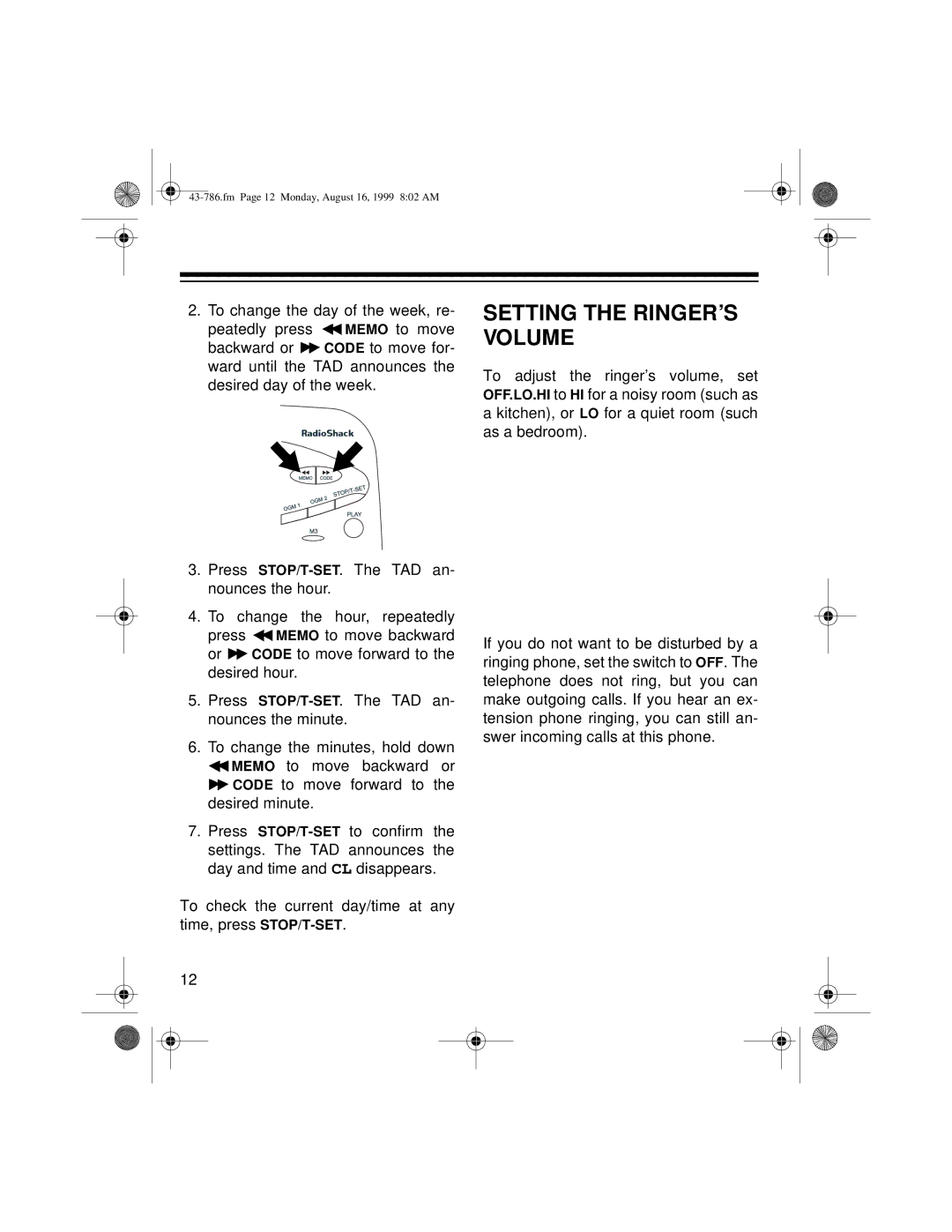TAD-1026 specifications
The Radio Shack TAD-1026 is a classic cassette telephone answering device that has left a significant mark on both the nostalgia of vintage tech enthusiasts and the practical concerns of communication in the 1980s. Released during an era when the modern telephone was undergoing a digital revolution, the TAD-1026 integrated innovative technology to provide users with reliable message recording and playback capabilities directly through their home telephone lines.One of the main features of the TAD-1026 is its built-in cassette recorder, which allows users to store incoming messages on standard cassette tapes. This analog approach, while seen as rudimentary by modern standards, was revolutionary at the time, as digital storage was not yet commonplace in consumer devices. Users could record up to 30 minutes of messages, making it convenient for handling calls when they were unable to answer the phone. The inclusion of an easy-to-use dial system for playback added to its appeal, allowing users to quickly respond to important messages.
The TAD-1026 also boasted a telephone line-powered design, eliminating the need for batteries or external power sources, which was a significant advantage for a device intended for long-term daily use. The integrated volume control enabled users to adjust playback sound, ensuring that messages could be heard clearly.
Noteworthy is the device's distinctive features aimed at enhancing user experience. It included an adjustable recording time, allowing individuals to customize how long messages could be recorded based on their preferences. Additionally, the TAD-1026 had an LED indicator to show status, such as recording or playback, which simplified the operation process.
In terms of technology, the TAD-1026 utilized a combination of solid-state circuitry and conventional tape technology, creating a device that was both durable and reliable. Its compact design allowed it to easily occupy a small desk or table space, a consideration that was particularly important in home settings.
Overall, the Radio Shack TAD-1026 remains a memorable testament to the blend of simplicity and functionality in consumer electronics of its time. Though it may seem antiquated by today’s standards, its design and capabilities laid foundational groundwork for the sophisticated voicemail technology that would follow. Whether for historical interest or practical use, the TAD-1026 exemplifies a significant era in telecommunications, serving as an important connection between past and present technologies.

